Recipients
1989 Healy
1990 Patterson
1991 Bowers
1992 Slaback
1993 Skrable
1994 Booth
1995 Casey
1996 Bronson
1997 Ryan
1998 Denham
1999 Rich
2000 Turner
2001 Vargo
2002 Ziemer
2003 Cember
2004 Maher
2005 Moeller
2006 Reinig
2007 Pryor
2008 Willison
2009 Terpilak
2010 Kirner
2011 Hiatt
2012 Cherry
2013 Lambert
2014 Aldrich
2015 Nicholson
2016 Tarpinian
2017 Potter
2018 Rao
2011 WILLIAM A. McADAMS OUTSTANDING SERVICE AWARD
Presented to JERRY W. HIATT at the 56th Annual Meeting of the Health Physics Society, West Palm Beach, Florida, June 26-30, 2011
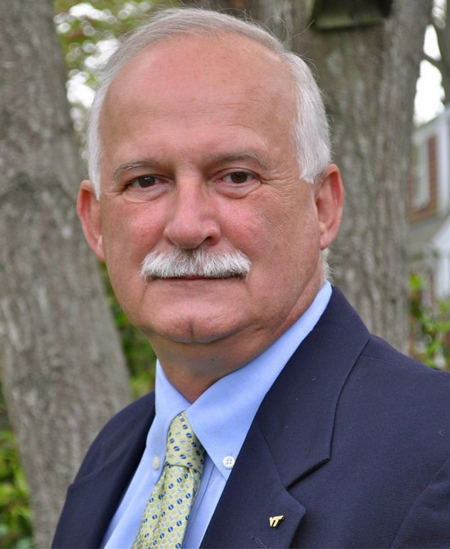
(click here for acceptance remarks)
For sustained and outstanding services to the American Board of Health Physics (ABHP) and the American Academy of Health Physics (AAHP), Jerry W. Hiatt is awarded the William A. McAdams Outstanding Service Award for 2011. The award was established in 1989, and it is presented annually by the ABHP and AAHP to honor a certified health physicist who has made a significant contribution toward the advancement of professionalism in health physics and to the certification process. In conferring this award, the Awards Committee noted Jerry's long association with the ABHP and his leadership role in initiating, developing, and implementing numerous improvements to the certification process. His services have collectively resulted in practical tools that have been in use since then.
Certified in 1984, Jerry was one of the early contributors to the ABHP when he served on the initial Part 1 Exam panel from 1988 to 1992. He became Vice-Chair in 1989 and the Chair in 1990. During this period, he spearheaded the assembly and maintenance of the first word-processed Exam bank, which has since then become a very valuable tool in exam preparation. Jerry also played a pivotal role in developing and administering the very first "Passing Point" Workshop and in leading two subsequent workshops. Jerry served on the Part 2 Exam panel from 1995 to 1999. In 2004, he was elected to the ABHP as Board Member and served his full term until 2008. During 2005 and 2006, he served as the Parliamentarian. His high standards, professionalism, and knowledge were deeply appreciated by his colleagues on the Board. A dedicated volunteer, he gave freely of his time and expertise to make a difference in the quality of the services provided by the ABHP. Jerry's constructive approach and wise counsel contributed greatly to the Board's continuous improvement of the certification process.
Jerry's volunteer activities have not been restricted to the ABHP. He has also contributed to the RP2020 Task Force and the Nuclear Uniform Curriculum Program of the Nuclear Energy Institute. He has contributed to ANSI N42.33, "American National Standard for Portable Radiation Detection Instrumentation for Homeland Security," and ANSI N42.37, "Training Requirements for Homeland Security Purposes Using Radiation Detection Instrumentation for Interdiction and Prevention." He is currently on the Review and Rewrite Committee of ANSI 3.1, "Selection, Qualification, and Training of Personnel for Nuclear Power Plants." He also served on the Board of Directors - Power Reactors Section of the Health Physics Society. He is a member of Linn State Technical Institute, Aiken Technical College, and Indian River State College Advisory Boards. He has been a plenary member of the HPS since 1977.
Jerry graduated in the initial class with a B.S. in biology with health physics option from the Virginia Polytechnic Institute and State University in 1975. He has held a variety of health physics positions, progressing rapidly in his career. He started his health physics career as a Health Physics Technician for the Surry Nuclear Power Station. In 1976, he joined USNRC-Region III as a Radiation Specialist where he inspected and evaluated health physics programs at PWR, BWR, and research reactors, and at uranium conversion facilities for compliance with technical specifications/license conditions, NRC regulations, and industry standards. Jerry was on the initial USNRC Response Team for the Three Mile Island Incident and rotated through various assignments during the recovery process. He also played a substantial role in the planning and establishment of the Region III Incident Response Center and in the development of the post-TMI Region III Emergency Plan. Later, from 1979 to 1985, he was the Principal Health Physicist for the NUS Corporation where he performed a variety of tasks including ALARA training, developing health physics programs, writing and reviewing procedures and documents, and site emergency plans for multiple domestic and international - Slovenia, Spain, and Japan - nuclear power plants.
His assignments also included the development of an integrated and systematic approach to initial training across all of the Progress Energy nuclear sites, as well as developing radiation safety procedures for the start-up of the Harris Nuclear Plant. In 1985, he moved to the Vogtle Electric Generating Plant (VEGP, Bartlett) as a Radiological Consultant where he assisted in the development of the VEGP Readiness Review Program and procedures and participated in the radiological "readiness review" process for initial station start-up. In 1986, he transitioned to his current position as the Chief Technical Officer and Executive Vice President for Environmental Safety and Health at the Corporate Office, Bartlett Holdings, Inc., where one of his passions remains providing training and guidance to employees (domestically and internationally) seeking to advance their careers in radiation safety.
Jerry's many years of sustained and dedicated service to the ABHP and the health physics community at large make him fully deserving of recognition and applause. With this award, Jerry joins an elite group of 22 previous recipients. It is with great pleasure that I present the William A. McAdams Outstanding Service award for 2011 to Jerry W. Hiatt.
Govind R. Rao, ABHP Vice Chair
2010 WILLIAM A. McADAMS OUTSTANDING SERVICE AWARD
Presented to NANCY P. KIRNER at the 55th Annual Meeting of the Health Physics Society, Salt Lake City, Utah, June 27-July 1, 2010
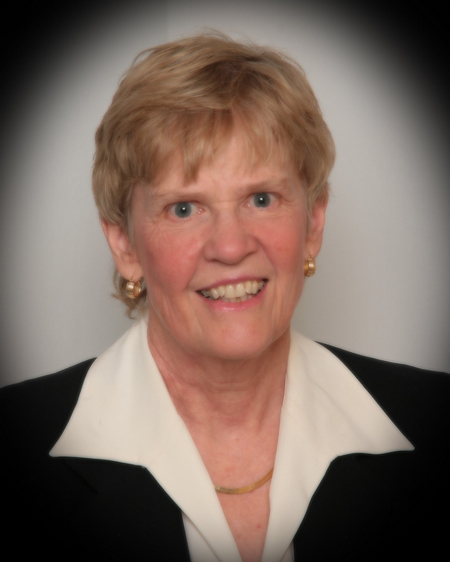
(click here for acceptance remarks)
Nancy P. Kirner is the recipient of the 2010 William A. McAdams Outstanding Service Award. This award is presented annually by the American Board of Health Physics (ABHP) and the American Academy of Health Physics (AAHP) to honor a certified health physicist who has made a significant contribution toward the advancement of professionalism in health physics and to the certification process. In conferring this award, the nominating committee especially recognizes Kirner's sustained service to the programs and objectives of the ABHP for more than 20 years. She has served as a member of the Panel of Examiners, as Chair of the Part II Panel, as a member of the ABHP, and has held each office of the ABHP. She was elected Treasurer and President of the American Academy of Health Physics. She also served the profession of health physics as a member of the Health Physics Society Board of Directors.
Nancy Kirner was first introduced to the profession of health physics in 1968 when she was enrolled in an "Introduction to Health Physics" course at the Civil Engineering Department of Tufts University, given by Jerry Parker, then the Director of the Massachusetts Radiation Control Program. After graduating from Tufts University with a BS in Biology, she earned her Masters Degree in Environmental Health Sciences (Radiological Health) from G. Hoyt Whipple's program at the University of Michigan, in large measure due to an Atomic Energy Commission fellowship. Her internship at Brookhaven National Laboratory, under the direction of Charles B. Meinhold and Charlie Flood, taught her how the profession of health physics was practiced.
Her first paying job in health physics was with the University of Michigan's Radiation Control Service, ably headed by Art Solari. After two years in Ann Arbor, she and her husband moved to Olympia, Washington. Jobs were scarce there, so she and her husband, John, started a family. Soon after their daughter Katherine was born, a position opened with the State of Washington's Radiation Control Program, under the direction of Robert C. Will. Within the first month, she was given the opportunity to deliver a paper at the Columbia Chapter Health Physics Society. Bringing the baby with her on the five-hour journey, and begging some of the men in the back of the room to watch her baby during the presentation, Nancy soon learned that her baby ruined Ron Kathren's tie. Thus began a long-lasting mentoring relationship with the Columbia Chapter and its many great health physicists and members of the Academy.
Nancy was employed by the State of Washington for 12 years, during which time she begame a Certified Health Phyisicist in 1978, gave birth to son Steven in 1979, and begame a skilled Agreement State regulator and specialist in low-level radioactive waste. Seeking to practice more health physics, Nancy had the distinct pleasure to work in a large consulting firm with David A. Waite, an Academy member and former president of HPS. After nine years as a consultant with this firm, she started Kirner Consulting, Inc., in 1996, and has been its president ever since, sometimes working for and with the Cascade Chapter and members of the Columbia Chapter who babysat Katherine in 1975.
Nancy's path to certification and participation in the certification process is a testament to hard work and balancing work and family. Shortly after gaining certification, Ron Kathren recommended Nancy as a member of the ABHP Panel of Examiners. She would eventually chair the Comprehensive Part II Panel of Examiners for the 1988 Exam. After recovering from that position, (arguably the most time-consuming and critical position of responsibility that the Board has to offer), she was appointed to serve on the American Board of Health Physics, progressing from Board member to Parliamentarian, Secretary, Vice Chair, and then Chair in 1999. She also served as elected Treasurer of the Academy in 1989-1990 and held the offices of President-Elect, President, and Past-President of the Academy from 2007-2009.
Today, the American Academy of Health Physics and American Board of Health Physics are proud to honor and recognize Nancy Kirner for her many years of dedication and sustained service to the health physics profession and the certification process in particular I take great pride and privilege in presenting the 2010 William A. McAdams Outstanding Service Award to Nancy P. Kirner.
Nora Nicholson, Vice Chair ABHP
2009 WILLIAM A. McADAMS OUTSTANDING SERVICE AWARD
Presented posthumously to MICHAEL S. TERPILAK at the 54th Annual Meeting of the Health Physics Society, Minneapolis, Minnesota, July 12-16, 2009
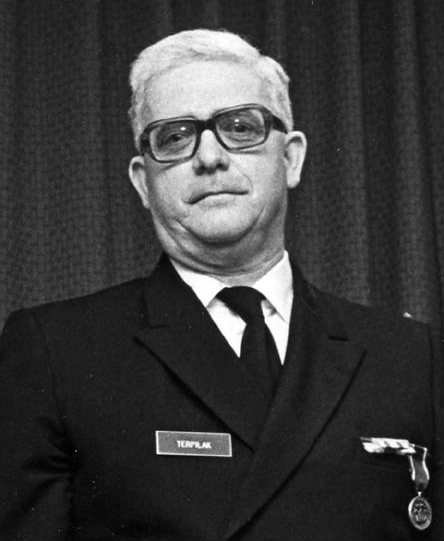
The William A. McAdams Outstanding Service Award is presented annually by the American Academy of Health Physics and the American Board of Health Physics (ABHP) to honor a certified health physicist who has significantly contributed toward the advancement of professionalism in health physics and to the certification process. The 2009 McAdams award is granted posthumously to Michael S. Terpilak.
In conferring this award, the nominating committee honors Mike's life-long commitment the programs and objectives of the ABHP. Mike was a member of the Comprehensive Examination Panel from 1969 to 1975 and its Chair from 1974 to 1975. He also served as a member of the American Board of Health Physics from 1976 to 1980 during which time he served as secretary-treasurer and chairman. Mike was also one of the two ABHP members appointed to the initial National Registry Radiological Protection Technologists exam panel. After leaving the board in 1980, he was hired as the first (part-time) Executive Secretariat for the ABHP, a role which he fulfilled until 1983.
Mike was also very active in the Baltimore-Washington Chapter of the Health Physics Society (BWCHPS), serving as its president in 1971. He started the first ABHP certification course in the chapter in 1966 to 67. This course provided a good review for exam candidates and became a "must" in the world of exam preparation for many candidates. The BWCHPS awarded him a Distinguished Service Plaque for this effort. Mike was also the co-publisher of the "The Health Physics and Radiological Health Handbook," (aka the "pink book") which is still in use by health physicists everywhere.
Mike was born on the lower east side of Manhattan and lived in New York City until his late 20s. He attended Polish Catholic Parochial School and was an altar boy. He later attended Cardinal Hayes High School in the Bronx. After graduating from New York University, he served in the Army during the Korean War. After his Army service, Mike returned to New York City to work for the Department of Health for the City of New York. That job piqued his interest in health-related occupations and he became a public health sanitarian, and eventually a health physicist. He worked as a health physicist at the Ginna Nuclear Power Plant in Rochester, New York, during the early days of that plant.
Subsequently, he joined the Commissioned Corps of the Public Health Service (PHS) as a sanitarian. Mike was assigned to the PHS's Bureau of Radiological Health in the radioactive material program. There he did investigations on radon daughters found in jewelry made from spent radon seed used in cancer therapy in the 1920s and 30s. Because of his interest in jewelry he worked with the gold industry to try to devise guidelines for preventing radioactively contaminated gold from entering the industrial and jewelry market. He also brought attention to the importation of gem stones from South America that had been exposed to neutron radiation to enhance their color. In addition, Mike was the Secretary/Treasurer of Bethesda Jewelers, a full-service jewelry store in downtown Bethesda, operated by his wife and son.
Mike was a practical field health physicist and enjoyed the challenges that came with field work. He was the health physicist for the refueling and decommissioning of the nuclear power cargo ship NS Savannah. He also wrote health physics procedures for the Army Packaged Power nuclear reactor and subsequently went to Antarctica to support the installation of it at McMurdo Sound.
Mike was an integral part of the Public Health Service/Bureau of Radiological Health response to the Three Mile Island Unit 2 accident. As a result of the accident, the Public Health Service formed an Office of Health Physics and Mike was named Deputy Director. He retired from the PHS in 1982.
After his retirement from PHS, Mike cofounded Nucleon Lectern Associates, a health physics education company that published the first commercial version of "The Health Physics and Radiological Health Handbook," which is used by health physicists everywhere. Mike worked for or consulted with many federal agencies, including the Smithsonian Institute, Food and Drug Administration, the Federal Bureau of Investigation, the U.S. Nuclear Regulatory Commission, and the Secret Service. In addition, he consulted with companies in the private sector. He also was active in and a founder of the local chapter of the American Association of Radon Scientists and Technologists. Mike was also a part-time radiological consultant with Bishop & Associates in Baltimore. Mike died April 11 2007 and is survived by his wife Katherine, son Thomas and daughter-in-law Sue; and his son Jeffrey.
Patricia A. Milligan, Vice-Chair ABHP
2008 WILLIAM A. McADAMS OUTSTANDING SERVICE AWARD
Presented to JAMES S. WILLISON at the 53th Annual Meeting of the Health Physics Society, Pittsburgh, Pennsylvania, July 13-17, 2008
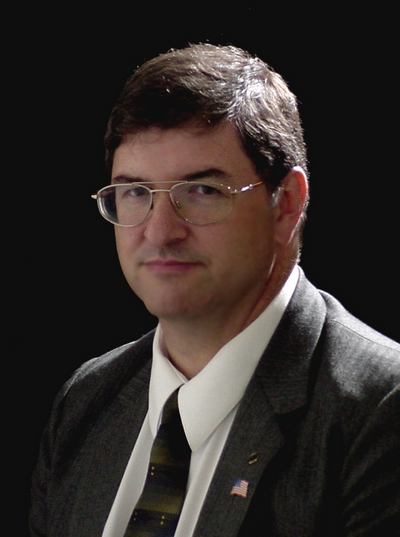
(click here for acceptance remarks)
James S. Willison is the recipient of the 20th William A. McAdams Outstanding Service Award. This award is presented by the American Academy of Health Physics (AAHP) and the American Board of Health Physics (ABHP) to honor a certified health physicist who has made a significant contribution toward the advancement of professionalism in health physics and to the certification process.
Jim earned a bachelor's and then a master's degree in nuclear engineering from Oregon State University in 1980 and 1982, respectively. He was also a recipient of an inaugural Institute of Nuclear Power Operations (INPO) fellowship.
Jim began his professional career at Portland General Electric Company (PGE). He gained progressive professional experience, and, in time, managed technical staff with responsibility for radiological engineering, internal and external dosimetry, radiation protection oversight, respiratory protection and environmental monitoring in support of the Trojan Nuclear Power Plant. During his 10-year tenure at PGE, he was the recipient of five PGE Notable Achievement Awards.
Also, while at PGE, Jim became a registered professional engineer. This is interesting because during this phase of his career, he was surrounded by certified health physicists, including last year's McAdams Award recipient, Kathy Pryor.
Jim spent the next eight years with NUS Corporation, where, at least initially, he was still a nuclear engineer surrounded by certified health physicists. Jim decided to join the crowd and seek ABHP certification. As part of his studies, he put together a binder containing copies of past Part II exams with Ken Skrable's solutions, which later became a significant resource for the Part II Panel. And, obviously, he succeeded in his effort to become a certified health physicist.
Mr. Willison presently works for Washington Safety Management Solutions LLC (WSMS), a part of URS Corporation, where he provides health physics and nuclear engineering support for government and commercial clients, including radiological design, accident analysis, shielding analysis, criticality, emergency preparedness, occupational and environmental health physics, as low as reasonably achievable (ALARA) considerations, and regulatory interpretations. But now, certain roles are reversed; he is surrounded by engineers. At WSMS, he has been a technical evaluator and instructor for the Federal Emergency Management Agency (FEMA) at power plant evaluations. Recently, his work with power plant licensing took him to Japan, which has inspired him to begin learning some of that language. In the eight years that he has been at WSMS, he has been the recipient of six WSMS President's Awards.
As impressive as his career has been, it is his service to the ABHP that has earned him this award. Jim Willison has served in the following roles since his certification in 1994:
- Exam Proctor, 1995-1998, 2005, 2006
- Part II Panel of Examiners, 1996-1999 (Panel Chair in 1999)
- Part II Reengineering Ad-Hoc Panel, 2001
- ABHP Board, 2002-2006 (including each officer position)
- Part I Panel of Examiners, 2007-2010
In the only year that Jim was not serving a position with the ABHP since becoming certified, Jim was busy preparing a report to the Board on evaluation criteria for Part II questions. He was also just appointed chair of the AAHP Continuing Education Committee.
As impressive as this may be, it is his contributions during this service that made Jim Willison the obvious choice for this year's award. A partial list of these contributions follows.
Web site contributions
- Increased use of secure Academy Web site - which improved the efficiency of exam question reviews
- Compiled the McAdams Award citations and prepared its history
Board function improvements
- Fostered closer relationships between the Board and Exam Panels; encouraged (and led by example) greater Board involvement in Panel workshops
- Instituted greater Board involvement in Part II grading
- Reformatted policy and procedure manuals into style guide format
Recognition of the Board, Academy, and certification process
- Pushed for recognition of ABHP and AAHP officers at national meetings through ribbons
- Advocated certification for non-certified health physicists
- Spearheaded the re-accreditation application with Council of Engineering and Scientific Specialty Boards (CESB)
- Addressed the issue of recognition of ABHP certification for medical radiation safety officers created when the U.S. Nuclear Regulatory Commission revised 10 CFR 35
Examination and examination preparation improvements
- Revised policy on SI Units for examinations
- Increased analysis of Part II Exam results
Three of his contributions warrant more extensive comment than a bulleted mention. Jim singlehandedly compiled the Part II Question Bank, an electronic database of approximately 160 questions with their solutions and performance data. While recycling questions was permitted prior to Jim's compilation, the database made re-using questions practicable.
Then he did the same thing for the Part I Panel, but this time with a question bank of approximately 600 questions. For the sake of brevity, the transformative effects of this will not be detailed, except to say that they were profound. Nonetheless, improving the examination is the ultimate metric. The examination preparation service reported that the 2007 Part I Exam was "a whole, whole lot better than it was a few years ago." While Jim doesn't deserve all the credit for this, the question bank he compiled allowed the Panel members to spend their energy where it mattered.
Finally, one cannot ignore what is perhaps Jim Willison's most visible contribution - the tropical shirt initiative. For those unaware of the significance of the tropical shirts - the Board wears tropical shirts at its meetings and on the day of the examination. Jim's explanation, "We've been called stuffed shirts; a stuffed tropical shirt is much more palatable."
It is fitting that Jim Willison receives this award in a major anniversary year. It was 50 years ago that the Health Physics Society appointed a temporary ABHP and named "an energetic and farsighted young man," William McAdams, as its Chair. Jim's most significant accomplishments merge fundamental principles from the past with today's technology to advance the certification process. It is my privilege and pleasure on behalf of the ABHP to present the William A. McAdams Outstanding Service Award to another energetic and farsighted young man, James S. Willison.
Kent Lambert, Vice Chair ABHP
2007 WILLIAM A. McADAMS OUTSTANDING SERVICE AWARD
Presented to KATHRYN H. PRYOR at the 52th Annual Meeting of the Health Physics Society, Portland, Oregon, July 8-12, 2007
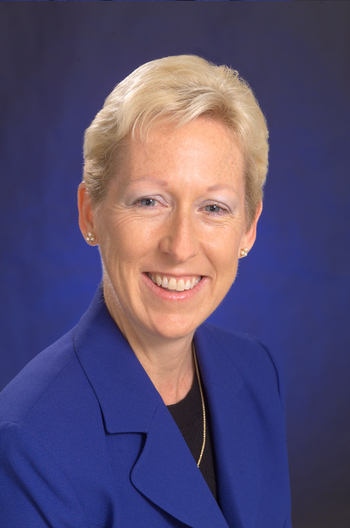
(click here for acceptance remarks)
The William A. McAdams Award is given in recognition of significant contributions to the certification process and the promotion of professionalism in the field of health physics. This year the Award is given to Ms. Kathryn H. Pryor in recognition of her energetic dedication to the practice of health physics and her prolific professional accomplishments.
For the past 25 years, Kathy has provided management and technical support to radiation protection programs at radiological facilities regulated by the U.S. Department of Energy (DOE), U.S. Nuclear Regulatory Commission (U.S. NRC), and Agreement States. Her well-rounded background includes assignments at the Pacific Northwest National Laboratory (PNNL), Trojan Nuclear Plant, University of Southern California Health Sciences Campus, and Southern California Edison Company.
Kathy attended the St. Andrews Priory School for Girls in Honolulu, HI, and was not particularly fond of science during her high school years. She was especially not fond of biology, having had to catch and transport a very large toad to school to disect in her biology class. Kathy began her college education in fashion design at the University of Hawaii. She came to the realization that perhaps a fashion design degree was not going to put enough food on the table, and instead switched to pre-medicine at Washington State University. Kathy graduated from the University of Washington with a B.S. degree in Biology, followed by a M.S. degree in Radiological Sciences.
Following graduation, Kathy was offered a position at the San Onofre Nuclear Generating Station in San Clemente, CA. She worked with a large number of Certified Health Physicists, all of whom provided support and encouragement in pursuing certification by the American Board of Health Physics (ABHP). Kathy held technical support positions both at the plant and in Southern California Edison's corporate office. She then held the position of Radiation Safety Officer at the University of Southern California Health Sciences Campus, administering the school's radioactive materials license and managing the campus Radiation Safety Office. Kathy moved back to the Northwest for a position first as a Health Physicist and later as the Radaition Protection Technical Support Supervisor at the Trojan Nuclear Plant.
Kathy is currently a Chief Health Physicist at PNNL, with responsibility for regulatory analysis and technical support of the Radiological Safety and Health programs. Kathy also currently leads the Safety and Health task for the Pit Disassembly and Conversion Facility design project, managing the assessment of worker dose for the facility and the application of radiological controls to its design. Kathy previously held the position of Manager, Safety and Health Technical Support, managing a group of health physicists, industrial hygienists and safety engineers in providing technical support and field dosimetry services forhte Radiological Control and Worker Safety and Health programs at PNNL.
Kathy became interested in becomming a Certified Health Physicist while working as a technician in the University of Washington Radiation Safety Office. She has been certified by the ABHP since 1986, and was certified in both Comprehensive Practice and the Power Reactor specialty at the time. Kathy began her service to the ABHP on the Part II Examination Panel in 1990, including service as Vice Chair and Chair in 1993 and 1994. Following this, whe served on the ABHP as Board Member, Parliamentarian, Secretary, Vice Chair and Chair. Her service on the American Academy of Health Physics (AAHP) includes a term as the Secretary, as a Director, and on the Continuing Education and Nominating Committees.
While on the ABHP, Kathy actively provided oversight of the exam process in order to maintain a consistent level of quality. She also graded questions on the Part II exam each of the years that she was a Board Member, and frequently served as a Grading Group Leader. Kathy's goal as a Panel Member and subsequently as Panel Chair was to keep questions to a managable length, to strive for clarity and to maintain a balance of subject matter on the exam. Even years after her tenure, the ABHP continues to seek Kathy's counsel by asking her to perform final QA reviews of the certification examination in a process that has traditionally come to be know as the "Wise Person Review." She has ably served in this role many times.
During her tenure as Board Chair, the reengineering effort for the Part II Exam was underway. As a chief steward for the AAHP financial resources and the ABHP's reputation, it became important to reassess the progress towards reengineering of the Part II Exam. After carefully leading the Board through a rigorous analysis of the progress and status of this effort, the end result was that the Board voted to discontinue the reengineering effort and to examine alternate methods of achieving the goals of the Part II Exam. The succeeding Board did achieve this desired outcome through closing the Part II question bank and gathering statistics on the performance of the questions.
Kathy is currently serving as the Secretary-Elect of the Health Physics Society (HPS) and has previously served a term on its Board of Directors. She has also served the HPS on the Placement Committee, the Standards Committee, and as a member of various standards working groups. Kathy is a proud member of the Columbia Chapter of the HPS. The Chapter has greatly benefited from her active participation including offices as Secretary, President-Elect, President, and Past President. She also servied on the Local Arrangements Committee for the 2005 HPS Annual Meeting. Because of her many contributions to the field and her dedicated service to the Health Physics community and the profession, the Columbia Chapter selected her as the 2003 recipient of hte prestigious John P. Corley Meritorious Service Award.
Kathy and her husband, Dale, recently celebrated their 20th wedding anniversary. They have three teenaged children: Jeffery, Erik, and Lindsey.
Jim Tarpinian, Vice Chair ABHP
2006 WILLIAM A. McADAMS OUTSTANDING SERVICE AWARD
Presented to WILLIAM C. REINIG at the 51th Annual Meeting of the Health Physics Society, Providence, Rhode Island, June 25-29, 2006
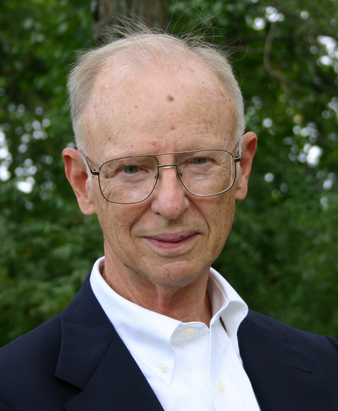
(click here for acceptance photo)
As we enter our 51st annual meeting of the Health Physics Society, it remains appropriate to continue to celebrate the accomplishments and years of service by the "founding" members and early contributors of the Society. Without the dedication, sacrifice, and guidance of these individuals, the Society and the American Board of Health Physics would not be what it is today.
Since the founding of the William A. McAdams award for outstanding service to the Board and professional contribution to the practice of health physics, seventeen Certified Health Physicists have been added to the roster of awardees. Today, I am very pleased to add to that list, the eighteenth recipient, William C. Reinig.
Bill Reinig served in the Navy during World War II. He received his bachelor of mechanical engineering degree from the Polytechnic University in New York in 1945. After the war he joined General Electric, and began his career as a reactor health physicist in 1946 at the Hanford Works under the supervision of none other than William McAdams. In 1948, he was employed by Associated Universities and became the leader of the radiation protection program at the nation's first peace-time research reactor at Brookhaven National Laboratory during its startup and initial operations.
In 1951, he was employed by the DuPont Company at the Savannah River Site to lead the preoperational environmental survey of the site. There he held various technical and management positions, including the superintendent of the Health Physics Department for 10 years. When Westinghouse became the operator of the Savannah River Site in 1988, he was appointed Deputy General Manager of the Environment, Safety and Health Department and a consulting scientist before his retirement in 1993.
Bill's activities for both the national and local Health Physics communities were numerous. He served on the Nominating and Code of Ethics Committees as well as the Council on Rules and Procedures. In 1964 and 1965, he was the Secretary of the Health Physics Society and in 1969-1971, he was a director of the Society. In 1979 and 1980, he was President-Elect and President. He is a charter member and a Fellow of the Health Physics Society. Bill also remained active on the local health physics scene, he was the Program Chairman of the 1968 Mid-Year Symposium and a Founder and President of the Savannah River Chapter of the Health Physics Society.
As one of the early contributors to the ABHP, Bill served on the first Examination Panel for the American Board of Health Physics from 1961 to 1967, serving as its chair in '62, '63, '64 and '66. He became a member of the ABHP Board of Directors in 1967, its Secretary-Treasurer from 1968 to 1974, and Chairman of the ABHP in 1975 and 1976. He also served as a director of the American Academy of Health Physics in 1986 and 1987.
Bill is a co-founder and serves as a director of Citizens for Nuclear Technology Awareness, the nation's largest non-profit, grass roots organization that supports the beneficial applications of nuclear energy. He served on the advisory committee for the Georgia Institute of Technology nuclear engineering and health physics programs.
He was elected to the National Council on Radiation Protection. During his six years on the Council, he chaired the scientific committee on tritium measurements. He is currently a consociate member of the NCRP.
Bill is the editor of the book, Environmental Surveillance in the Vicinity of Nuclear Facilities, and author of over forty technical papers.
Shawn Googins, Vice Chair ABHP
